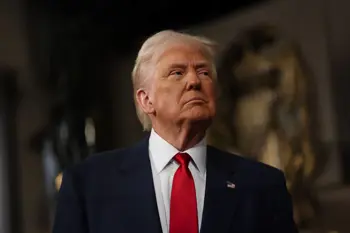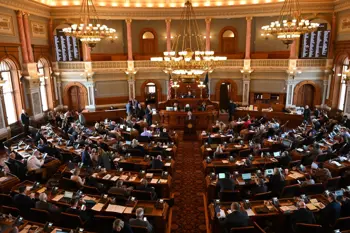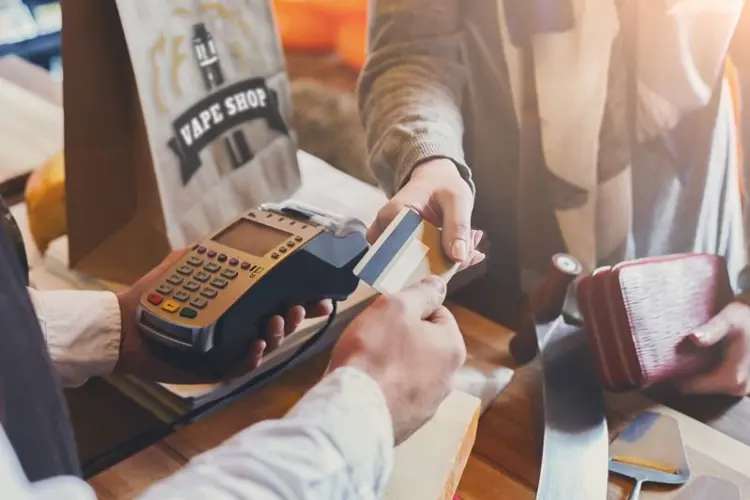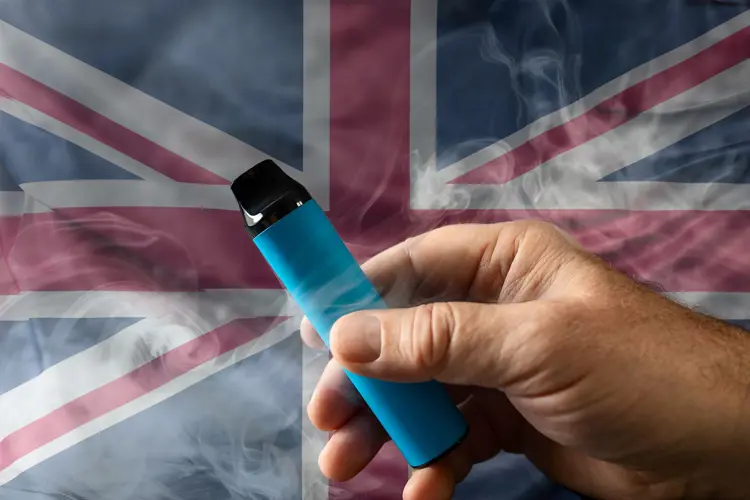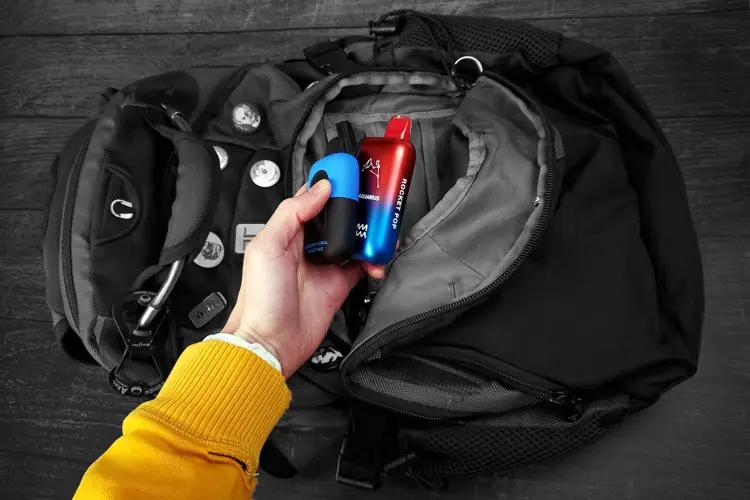As vaping grows in popularity, it becomes a natural target for governments in need of tax revenue. Because vapor products are usually bought by smokers and ex-smokers, tax authorities correctly assume that money spent on e-cigarettes is money not being spent on traditional tobacco products. Governments have depended upon cigarettes and other tobacco products as an income source for decades.
Whether vaping devices and e-liquid deserve to be taxed like tobacco is almost beside the point. Governments see them pushing smokers away from tobacco, and they understand that the lost revenue must be made up. Since vaping looks like smoking, and there is substantial public health opposition to vaping, it becomes an attractive target for politicians, especially because they can justify the tax with a variety of questionable health claims.
Vape taxes are now being proposed and passed regularly in the United States and elsewhere. Taxes are usually opposed by advocates for tobacco harm reduction, representatives of vaping industry trade groups, and vaping consumers, and they’re supported by tobacco control organizations, doctors, and the lung, heart and cancer associations.
Why do governments tax vaping products?
Taxes on specific products—usually called excise taxes—are applied for various reasons: to raise money for the taxing authority, to change the behavior of those being taxed, and to offset environmental, medical, and infrastructure costs created by the use of products. Examples include taxing alcohol to dissuade excessive drinking, and taxing gasoline to pay for road maintenance.
Tobacco products have long been a target for excise taxes. Because the harms of smoking impose costs on the whole society (medical care for smokers), proponents of tobacco taxes say that tobacco consumers should foot the bill. Sometimes excise taxes on alcohol or tobacco are called sin taxes, because they also punish the behavior of drinkers and smokers—and in theory help convince the sinners to quit their wicked ways.
But because the government becomes dependent on the tax revenue, a decline in the smoking rate creates a financial shortfall that must be made up with some other source of income, or else the government must reduce spending. For most governments, the cigarette tax is a significant revenue source, and the excise is charged in addition to the standard sales tax assessed on most consumer products.
How do vape taxes work?
Most U.S. consumers pay a state (and sometimes also local) sales tax on the vaping products they purchase, so governments already benefit from vape sales even before excise taxes are added. Sales taxes are usually assessed as a percentage of the retail price of the products being purchased. In many other countries, consumers pay a “value added tax” (VAT) that works the same way as a sales tax. As for excise taxes, they come in a couple of basic varieties.
One of the most common forms of vape tax is assessed at retail. Some taxes cover all vaping products (like New York State’s 20% tax), and others target e-liquid only. Sometimes the tax is only charged on sales of nicotine-containing e-liquid.
Wholesale taxes are ostensibly charged to the wholesaler (usually a distributor) selling products to a business that will resell them at retail sites in the state. The tax is usually a percentage of the wholesale price (cost). It may be assessed on all vaping products or just nicotine-containing ones. Although wholesale taxes are not collected from the end user of the product, the cost of the tax is usually factored into the retail price of the product.
Vaping taxes in the United States
There is no federal tax on vaping products in the U.S. Bills have been introduced in Congress to tax vapes, but none has so far gained enough support to pass.
Vape taxes in U.S. states, territories and municipalities
Before 2019, nine states and the District of Columbia taxed vaping products. That number more than doubled in the first seven months of 2019, when the moral panic over JUUL and teenage vaping pushed legislators to do something to "stop the epidemic."
As of early 2024, 31 U.S. states have a tax on vapor products, along with some cities and counties, and the District of Columbia and Puerto Rico.
Alabama
Beginning Oct. 1, 2025, Alabama will collect a tax of $0.10 per milliliter on all e-liquid. The tax applies to products with and without nicotine
Alaska
Alaska doesn’t have a state tax, but some municipalities have their own vape taxes:
- Juneau Borough, NW Arctic Borough and Petersburg Borough have identical 45% wholesale taxes on nicotine-containing products
- Anchorage Borough has a 55% wholesale tax
- Matanuska-Susitna Borough has a 55% wholesale tax
California
The California wholesale tax on “other tobacco products” is set yearly by the state Board of Equalization. It mirrors the percentage of all taxes assessed on cigarettes. Originally this amounted to 27% of the wholesale cost, but after Proposition 56 increased the tax on cigarettes from $0.87 to $2.87 a pack, the vape tax increased drastically. For the year beginning July 1, 2025, the tax is 54.27% of the wholesale cost for all nicotine-containing products.
On July 1, 2022, California added a retail tax to the existing wholesale tax—12.5% on all nicotine-containing vaping products, including those bought online from retailers in other states
Colorado
The current tax in Colorado is 56% of manufacturer’s list price on all nicotine-containing vapor products (including bottled e-liquids). The tax, approved by Colorado voters in 2020, launched in 2021 at 30%, escalated to 35% in 2022, then to 50% in 2023. It rose to 56% in 2024, and will increase to 62% in 2027. The tax is 50% lower for products given a Modified Risk (MRTP) designation by the FDA (but no manufacturer of a liquid-based vaping product has applied for an MRTP authorization)
Connecticut
The state has a two-tiered tax on nicotine-containing vape products: $0.40 per milliliter on e-liquid in closed-system products (pods, cartridges, disposables), and 10% wholesale on open-system products, including bottled e-liquids and devices
Delaware
A tax of $0.05 per milliliter on nicotine-containing e-liquid
District of Columbia
The nation’s capital classifies vapes as “other tobacco products,” and assesses a tax on the wholesale price based on a rate that is indexed to the wholesale price of cigarettes. The tax is currently set at 79% of wholesale cost for devices and nicotine-containing e-liquids
Georgia
A tax of $0.05 per milliliter on e-liquid in closed-system refills (pods, cartridges), and a 7% wholesale tax on open-system devices, bottled e-liquids, and disposables that can't be refilled or reused. The taxes apply to products with and without nicotine
Hawaii
A 70% wholesale tax on all vaping products
Illinois
A 45% wholesale tax on nicotine-containing vaping products. In addition to the statewide tax, both Cook County and the city of Chicago (which is in Cook County) have their own vape taxes:
- Chicago assesses a $1.50 per unit tax on any vaping product containing nicotine (bottled e-liquids or prefilled devices) and a separate $1.20 per milliliter tax on the liquid itself. (Chicago vapers also must pay the $0.20 per mL Cook County tax)
- Cook County taxes products containing nicotine at a rate of $0.20 per milliliter
Indiana
A 15% tax on the retail gross on all vaping product sales, with or without nicotine; and a 15% wholesale tax on closed-system products like prefilled pod vapes (and refill pods and cartridges) and disposables
Kansas
A tax of $0.05 per milliliter on all e-liquid. The tax applies to products with and without nicotine
Kentucky
A 15% wholesale tax on bottled e-liquids and open-system devices, and a $1.50 per unit tax on prefilled pods and cartridges. The taxes apply to products with and without nicotine
Louisiana
A tax of $0.15 per milliliter on nicotine-containing e-liquid
Maine
A 43% wholesale tax on all vaping products. The tax applies to products with and without nicotine
Maryland
A 20% retail tax on open-system vaping products and bottled e-liquids, and a 60% tax on nicotine-containing e-liquid in containers with a capacity under 5 milliliters (pods, cartridges, disposables). In addition to the state tax:
- Montgomery County imposes a 30% wholesale tax on all vaping products, including devices sold without liquid
Massachusetts
A 75% wholesale tax on all vaping products. The tax applies to products with and without nicotine. The law requires consumers to produce proof that their vaping products have been taxed, or they are subject to seizure and a fine of $5,000 for the first offense, and $25,000 for additional offenses
Minnesota
In 2011 Minnesota became the first state to impose a tax on e-cigarettes. The tax was originally 70% of wholesale cost, but was increased in 2013 to 95% of wholesale on finished products that contain nicotine (cigalikes, pod vapes, bottled e-liquids) and are transported from out of state. However, for bottled e-liquids produced in Minnesota, only the nicotine itself is taxed
Nebraska
Nebraska has a two-tiered tax, depending on the size of the e-liquid container (or prefilled vape). For products containing less than 3 milliliters of e-liquid, the tax is $0.05/mL. For products containing 3 mL or more, there is a 10% wholesale tax. The tax applies only to products that contain nicotine. In addition to the state tax:
- Omaha includes vaping products in the city’s 3% tobacco tax
Nevada
A 30% wholesale tax on all vapor products. The tax applies to products with and without nicotine
New Hampshire
An 8% wholesale tax on open-system vaping products (including nicotine-containing e-liquids), and $0.30 per milliliter on closed-system products (pods, cartridges, disposables)
New Jersey
New Jersey taxes nicotine-containing e-liquid at $0.30 per milliliter in pod- and cartridge-based products, 30% of the retail price for bottled e-liquids, and 30% wholesale for devices
New Mexico
New Mexico has a two-tiered e-liquid tax: 12.5% wholesale on bottled e-liquids, and $0.50 on each pod, cartridge, or cigalike with a capacity under 5 milliliters. The taxes apply to products with and without nicotine
New York
A 20% retail tax on all vapor products. The tax applies to products with and without nicotine
North Carolina
A tax of $0.05 per milliliter on nicotine-containing e-liquid
Ohio
A tax of $0.10 per milliliter on nicotine-containing e-liquid
Oregon
A 65% wholesale tax on all non-cannabis "inhalant delivery systems,", including hardware and "components" (which includes bottled e-liquids). The tax also includes heated tobacco products (HTPs) like IQOS, but exempts all vaping products sold in licensed cannabis dispensaries. The tax applies to products with and without nicotine
Pennsylvania
A 40% wholesale tax on e-liquids and devices that are sold with e-liquid included. The tax applies to products with and without nicotine
Puerto Rico
A tax of $0.05 per milliliter on e-liquid, and a $3.00 per unit tax on e-cigarettes
Rhode Island
A 10% wholesale tax on open-system vape products and bottled e-liquids, and a $0.50 per milliliter tax on sealed devices sold with liquid included
Tennessee
A 10% wholesale tax on all vapor products
Utah
A 56% wholesale tax on bottled e-liquids and prefilled devices. The tax applies to products with and without nicotine
Vermont
A 92% wholesale tax on bottled e-liquids and devices. The tax applies to products with and without nicotine
Virginia
A tax of $0.11 per milliliter on nicotine-containing e-liquid
Washington State
Washington has a two-tiered tax: $0.27 per milliliter on e-juice in pods and cartridges smaller than 5 mL in size, and $0.09 per milliliter on liquid in containers larger than 5 mL. The taxes apply to products with and without nicotine
West Virginia
A tax of $0.075 per milliliter on all e-liquid. The tax applies to products with and without nicotine
Wisconsin
A tax of $0.05 per milliliter on e-liquid in closed-system products (pods, cartridges, disposables) only. The tax applies to products with and without nicotine
Wyoming
A 15% wholesale tax on all vaping devices and nicotine-containing e-liquids
Vape taxes around the world
As in the United States, legislators around the world don’t really understand vapor products. The new products seem to lawmakers like a threat to cigarette tax revenue (which they truly are), so their impulse is often to impose high taxes and hope for the best.
International vape taxes
Albania
A tax of 10 leke per milliliter on nicotine-containing e-liquid
Azerbaijan
A tax of 20 manats per liter on all e-liquid
Bahrain
The tax is 100% of the pre-tax price on nicotine-containing e-liquid. That supposedly equates to 50% of the retail price. The purpose of the tax is unclear, since vapes are supposedly banned in the country
Belgium
A tax of €0.15 per milliliter on all e-liquid
Bulgaria
A tax of 0.35 Bulgarian Leva per milliliter on nicotine-containing e-liquid
Canada
A federal tax of 1.12 Canadian dollars per 2 milliliters (or fraction thereof) on the first 10 mL in any bottle, pod, or cartridge, then $1.12 per additional 10 mL (or fraction thereof). The tax applies to all vaping products that contain e-liquid, with or without nicotine. Most Canadian provinces also have vape taxes of their own
China (People's Republic of China)
China has a two-pronged wholesale tax, assessing a 36% rate on the production or import of e-cigarettes, and a separate 11% tax on wholesale domestic distribution
Costa Rica
A 20% wholesale tax on all vaping products and accessories
Croatia
Although Croatia has an e-liquid tax on the books, it is currently set at zero
Cyprus
A tax of €0.12 per milliliter on all e-liquid
Czech Republic
Czechia began taxing vape products in 2024 at a rate of 2.50 Czech koruna (CZK) per milliliter. The plan is to increase it gradually to CZK 10/mL by 2027, according to Chemnovatic
Denmark
A tax of DKK 2.00 per milliliter on all e-liquid
Ecuador
A 150% wholesale tax on "other tobacco products," which includes vaping products
Estonia
A tax of €0.20 per milliliter on all e-liquid
Finland
A tax of €0.30 per milliliter on all e-liquid
Georgia
A tax of 0.2 Georgian Lari per milliliter on all e-liquid
Germany
A tax of €0.26 per milliliter on all e-liquid. The tax will increase Jan. 1, 2026 to €0.32/mL
Greece
A tax of €0.10 per milliliter on all e-liquid
Hungary
A tax of 20 Hungarian forints per milliliter on all e-liquid
Indonesia
A 10% tax on all vaping products
Israel
On March 3, 2024, the Israeli Tax Authority increased the e-liquid tax to “not less than” 10.04 NIS (New Israeli Shekels) per milliliter (equivalent to $2.76 US per mL—nearly $83 for a 30 mL bottle). The authority also announced that the tax will increase in July to not less than 18.60 NIS/mL. The tax applies to e-liquid with or without nicotine, and includes e-liquid contained in bottles, pods, and disposable vapes
Italy
A tax of €0.08 per milliliter for nicotine-containing e-liquid, and €0.07 for zero-nicotine products
Jordan
Devices and nicotine-containing e-liquid are taxed at a rate of 200% of the CIF (cost, insurance and freight) value
Kenya
Kenya updated its excise duty rate on vaping products in 2022. The current rates are 40% for devices, and 70 Kenyan shillings per milliliter on e-liquid
Latvia
Latvia currently applies a dual tax to products containing e-liquid: €0.01 per milliliter of liquid + €0.005 per milligram of nicotine, according to Chemnovatic
Lithuania
A tax of €0.25 per milliliter on all e-liquid
Malaysia
A 10% tax on vaping devices and a 40 sen per milliliter tax on e-liquid. However, the government announced Oct. 29, 2021 that it would begin taxing nicotine-containing liquid, which will require a change in the law that prohibits sales of nicotine-containing products except by pharmacies. (In early 2022, this tax was postponed)
Montenegro
A tax of €0.90 per milliliter on all e-liquid
North Macedonia
A tax of 3 Macedonian Denar (MKD) per milliliter on all e-liquid, according to Tobacco-Free Kids
Norway
A tax of 4.5 Norwegian Krone per milliliter on all e-liquid
Paraguay
The law classifies e-cigarettes as tobacco products, and taxes them at 16% (probably based on wholesale price). However, most sellers don't register the products as tobacco, but import them under other classifications
Philippines
As of 2023, the country imposed a tax of 52 Philippine pesos (PHP) per milliliter for nicotine salt-based e-liquids, and 60 PHP per mL for freebase nicotine e-liquids, according to the Philippine News Agency. From 2024 onward, the tax is scheduled to increase by 5% each year
Poland
A tax of 0.96 Polish Zloty (PLN) per milliliter on all e-liquids, which will increase in 2026 to PLN 1.44/mL, and a tax of PLN 40 on all disposable vapes
Portugal
A tax of €0.336 per milliliter on nicotine-containing e-liquid
Romania
A tax of 0.52 Romania Leu per milliliter on nicotine-containing e-liquid. The tax can be adjusted annually based on consumer price increases
Russia
Disposable products are taxed at 50 rubles per unit. Nicotine-containing e-liquid is taxed at 13 rubles per milliliter
Saudi Arabia
The tax is 100% of the pre-tax price on e-liquid and devices. That supposedly equates to 50% of the retail price
Serbia
A tax of 4.32 Serbian Dinar per milliliter on all e-liquid
Slovakia
A tax of €0.20 per milliliter on e-liquid. In February 2027, according to Chemnovatic, the tax will increase to €0.30/mL
Slovenia
A tax of €0.18 per milliliter on nicotine-containing e-liquid
South Africa
A tax of 3.18 rand per milliliter on all e-liquid
South Korea (Republic of Korea)
The first country to impose a national vape tax was the Republic of Korea (usually called South Korea in the West)—in 2011, the same year Minnesota began taxing e-liquid. Currently the country has four separate taxes on e-liquid, each earmarked for a specific spending purpose (the National Health Promotion Fund is one). The various South Korean e-liquid taxes add up to a whopping 1,799 won (about $1.60 US) per milliliter, and there is also a waste tax on cartridges and pods of 24.2 won per 20 cartridges. However, the tax apparently applies only to tobacco-derived nicotine products, leaving e-liquid made with synthetic nicotine untaxed
Spain
A tax of €0.15 to €0.20 per milliliter on e-liquid (there is a complicated formula to calculate the exact amount for each product)
Sweden
A tax of 2 Swedish krona (SEK) per milliliter on nicotine-containing e-liquid up to 15 mg/mL. E-liquid containing 15-20 mg/mL is taxed at 4 SEK/mL
Togo
Taxed up to 45% (believed to be based on the wholesale price)
Ukraine
A tax of 3 Ukrainian hryvnia (UAH) per milliliter on all e-liquid
United Arab Emirates (UAE)
The tax is 100% of the pre-tax price on e-liquid and devices. That supposedly equates to 50% of the retail price
Sources
Vaping360 appreciates any updates or corrections to the posted tax rates. Please comment below, and provide supporting information (newspaper articles, links to government websites, etc.) if it's available.
President Trump promised during his election campaign to “save vaping," but his administration has undermined that goal at every turn.
The U.S. disposable vape market has grown to $2 billion in annual sales, although nearly none of the products are authorized by the FDA.
More than 30 bills that would impose severe restrictions vaping consumers’ product choices remain active in U.S. state legislatures.
The Freemax REXA PRO and REXA SMART are highly advanced pod vapes, offering seemingly endless features, beautiful touchscreens, and new DUOMAX pods.
The OXVA XLIM Pro 2 DNA is powered by a custom-made Evolv DNA chipset, offering a Replay function and dry hit protection. Read our review to find out more.
The SKE Bar is a 2 mL replaceable pod vape with a 500 mAh battery, a 1.2-ohm mesh coil, and 35 flavors to choose from in 2% nicotine.

